Abstract
In Cymbidium flowers, emasculation by removal of the pollinia and the anther cap leads within 24 hours to red coloration of the labellum (lip). Lip coloration, being the first sign of senescence in these flowers, has been ascribed to the action of ethylene in the lip. When a small incision in the base of the lip is made prior to emasculation, or when the lip is excised and placed in water within 10 to 15 hours after emasculation, coloration is considerably delayed. This indicates that a coloration-associated factor is moving in or out of the lip. Measurements of ethylene production of excised flower parts, isolated at different times after emasculation, showed an increase only in the central column; the other flower parts, including the lip, did not show a measurable change. In contrast, in situ measurements of the ethylene production of the central column and the remaining portion of the flower revealed a simultaneous increase in all the flower parts following emasculation. Similarly, application of radiolabeled 1-aminocyclopropane-1-carboxylic acid (ACC) to the top of the central column in situ leads to the production of radiolabeled ethylene by all the flower parts. In addition, the ethylene production of isolated lips, measured immediately after excision, was initially high but ceased within 10 to 15 minutes. Treatment of the central column in situ with ethylene or ethephon did not stimulate ACC production but did stimulate lip coloration and this was accompanied by an increased internal ethylene concentration in the lip. The data indicate that endogenously produced as well as applied ACC is rapidly translocated from the site of production or application to all the other flower parts where it is immediately converted into ethylene. By excision of a flower organ, the influx of ACC is prevented, causing a rapid decrease in ethylene production. In addition, it was found that ethylene may also be translocated in physiologically significant amounts within the flower. The roles of ACC and ethylene as mobile senescence or wilting factors in emasculation- and pollination-induced senescence is discussed.
Full text
PDF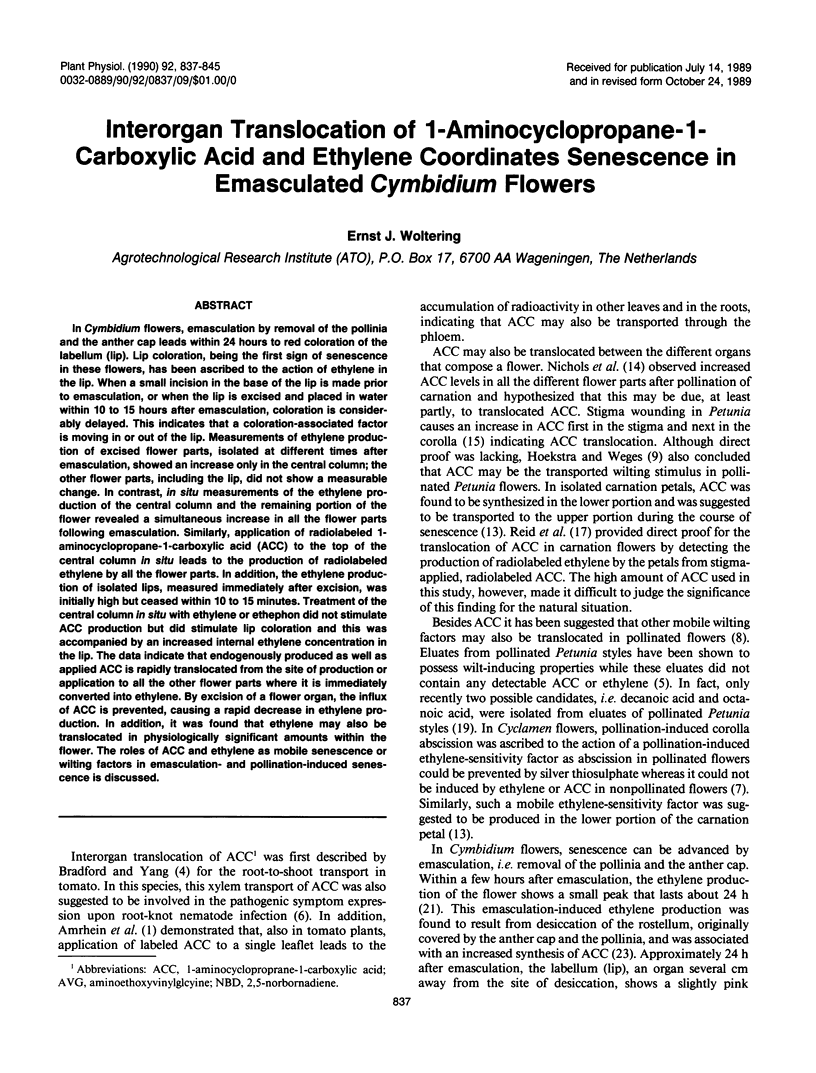
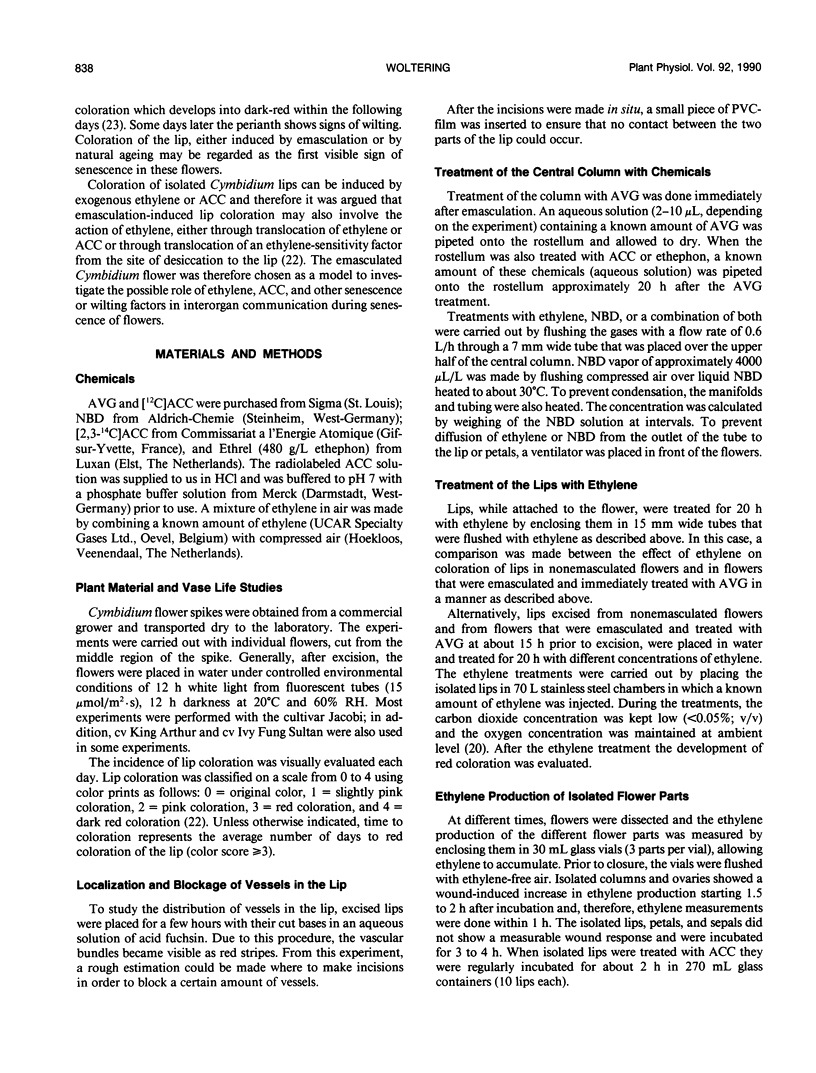
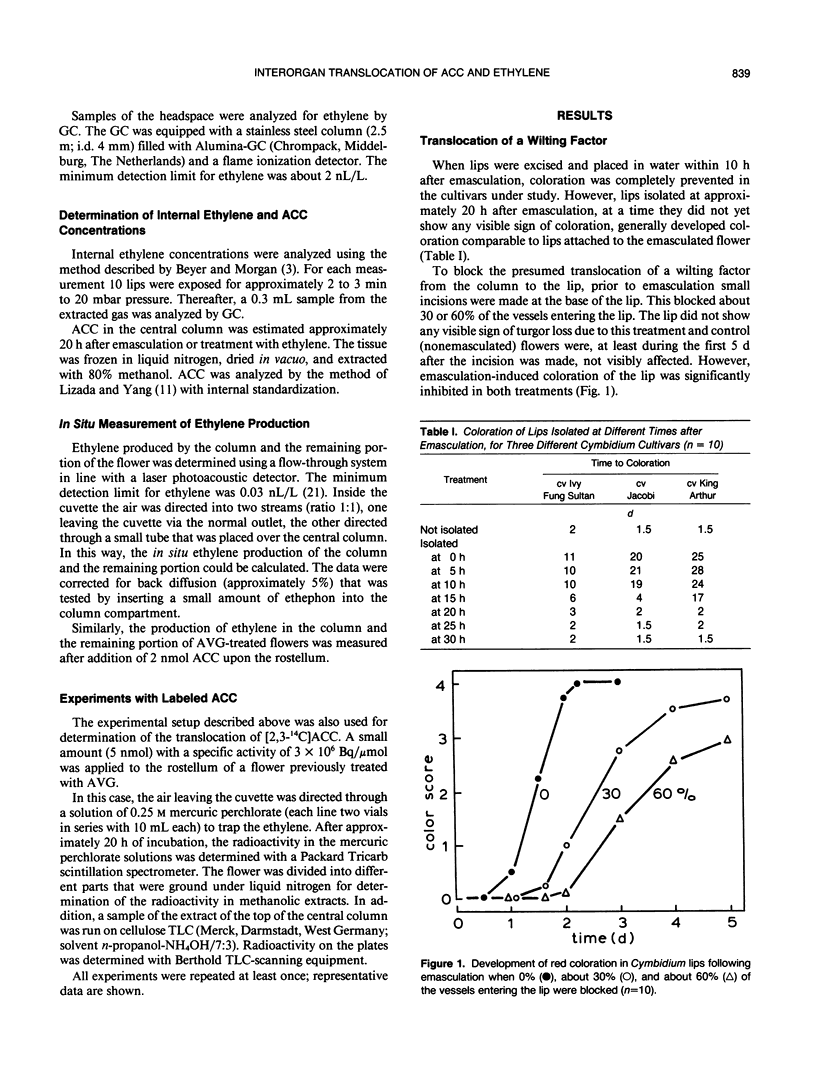

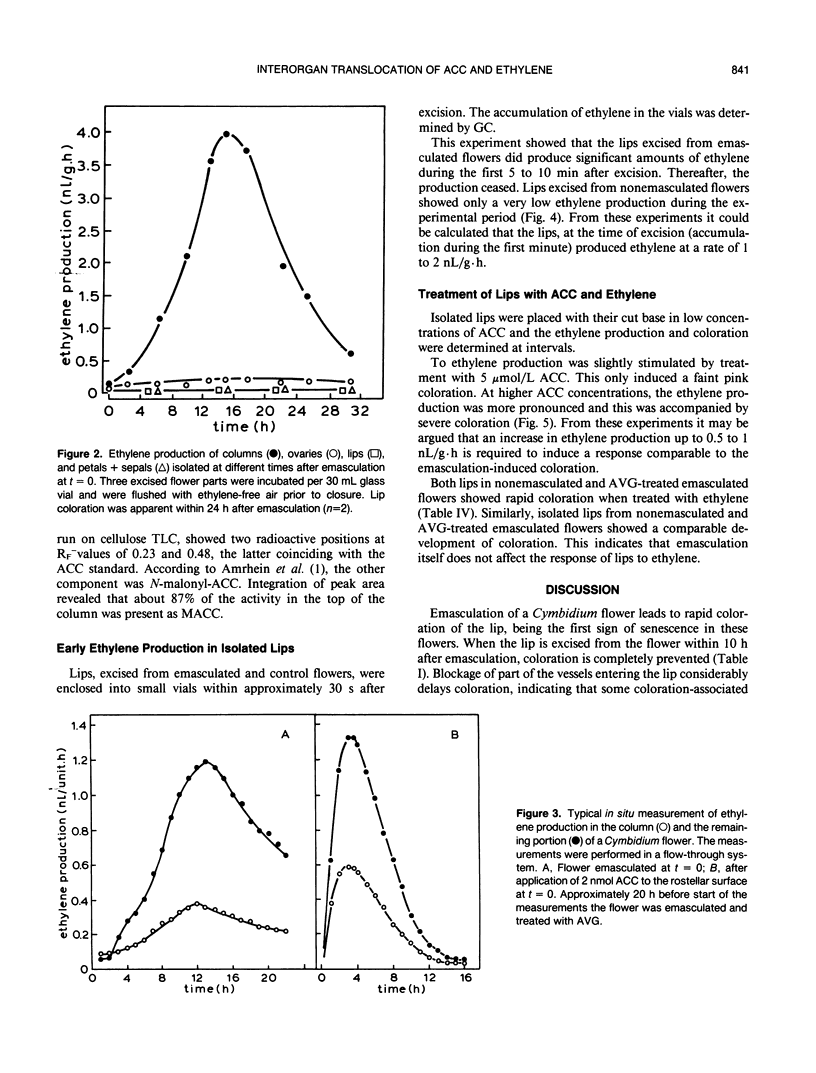
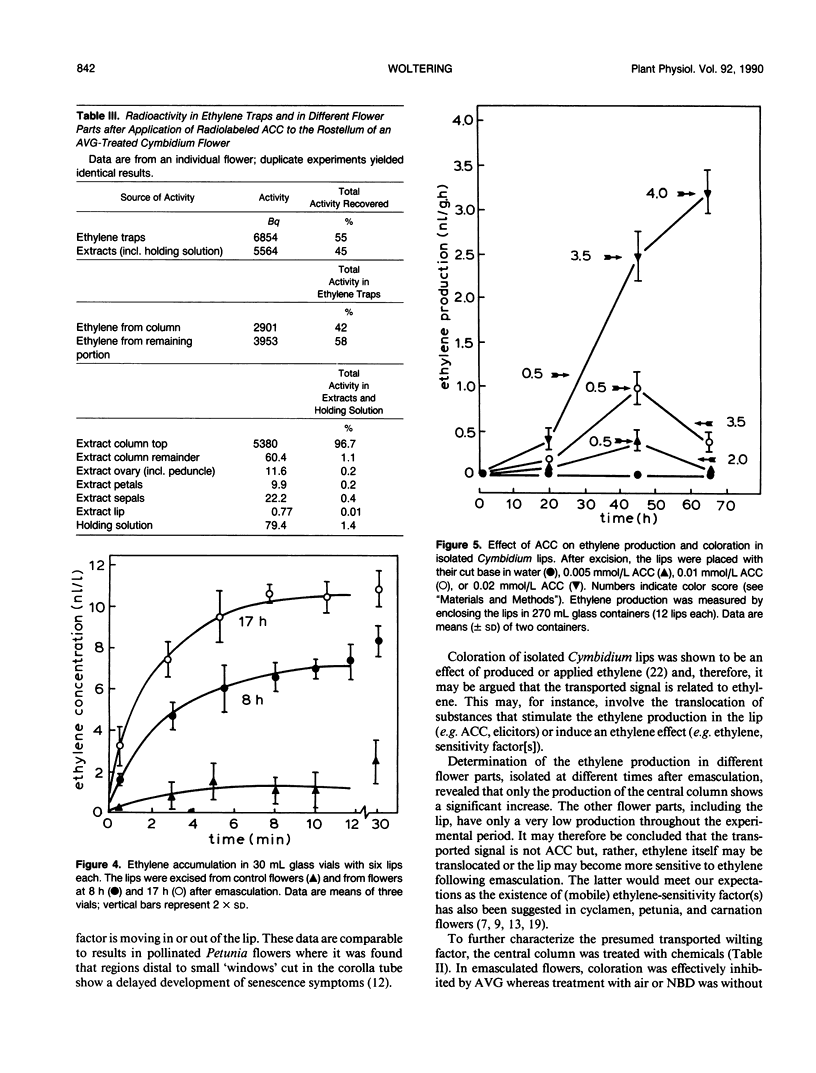
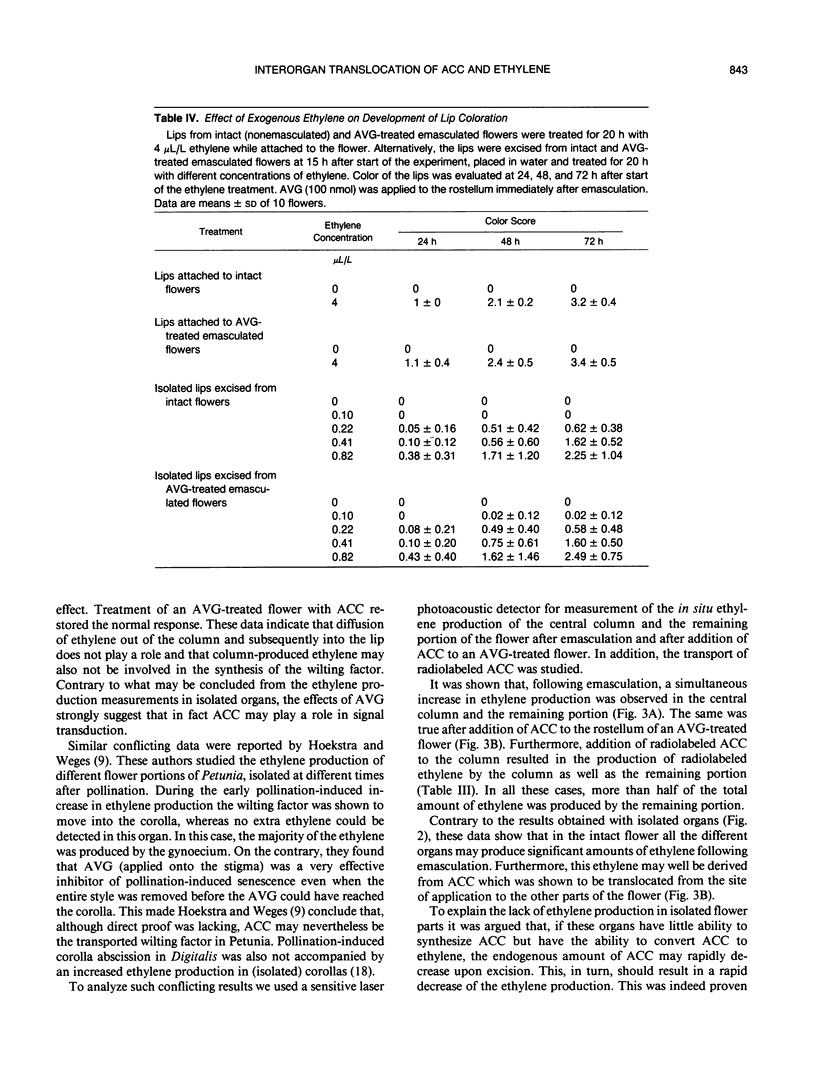
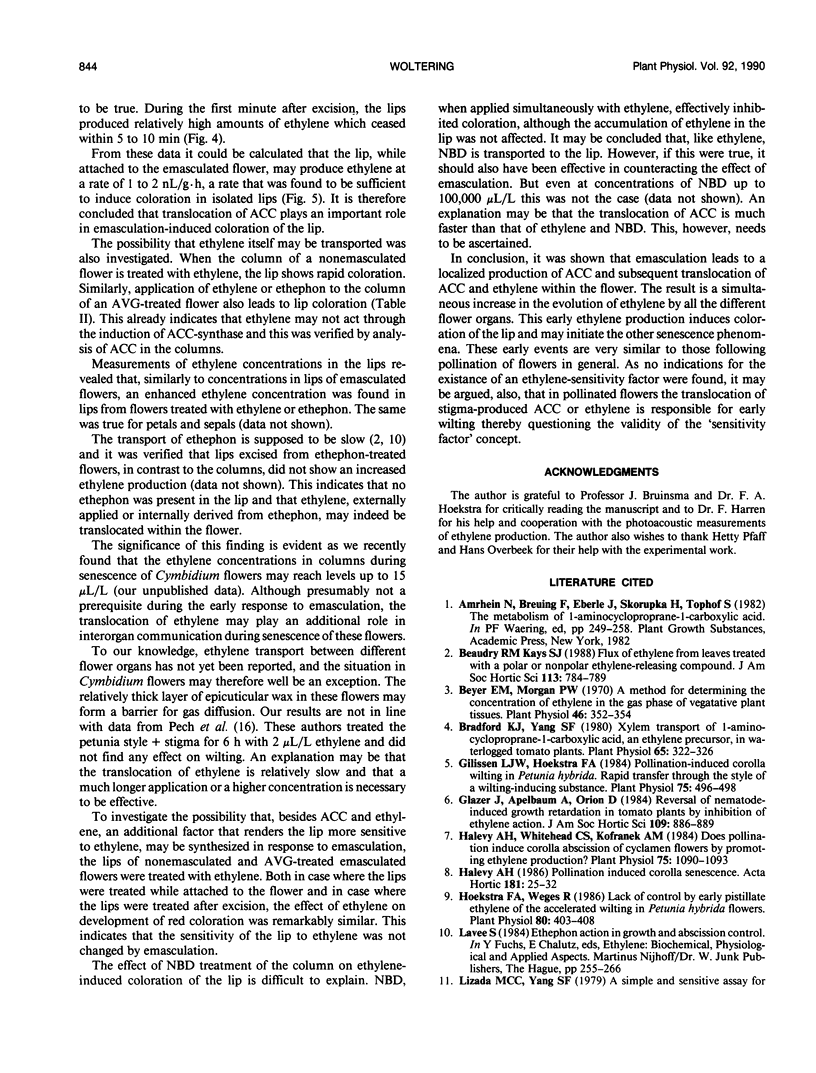

Selected References
These references are in PubMed. This may not be the complete list of references from this article.
- Beyer E. M., Morgan P. W. A method for determining the concentration of ethylene in the gas phase of vegetative plant tissues. Plant Physiol. 1970 Aug;46(2):352–354. doi: 10.1104/pp.46.2.352. [DOI] [PMC free article] [PubMed] [Google Scholar]
- Bradford K. J., Yang S. F. Xylem Transport of 1-Aminocyclopropane-1-carboxylic Acid, an Ethylene Precursor, in Waterlogged Tomato Plants. Plant Physiol. 1980 Feb;65(2):322–326. doi: 10.1104/pp.65.2.322. [DOI] [PMC free article] [PubMed] [Google Scholar]
- Gilissen L. J., Hoekstra F. A. Pollination-Induced Corolla Wilting in Petunia hybrida Rapid Transfer through the Style of a Wilting-Inducing Substance. Plant Physiol. 1984 Jun;75(2):496–498. doi: 10.1104/pp.75.2.496. [DOI] [PMC free article] [PubMed] [Google Scholar]
- Halevy A. H., Whitehead C. S., Kofranek A. M. Does pollination induce corolla abscission of cyclamen flowers by promoting ethylene production? Plant Physiol. 1984 Aug;75(4):1090–1093. doi: 10.1104/pp.75.4.1090. [DOI] [PMC free article] [PubMed] [Google Scholar]
- Hoekstra F. A., Weges R. Lack of Control by Early Pistillate Ethylene of the Accelerated Wilting of Petunia hybrida Flowers. Plant Physiol. 1986 Feb;80(2):403–408. doi: 10.1104/pp.80.2.403. [DOI] [PMC free article] [PubMed] [Google Scholar]
- Lizada M. C., Yang S. F. A simple and sensitive assay for 1-aminocyclopropane-1-carboxylic acid. Anal Biochem. 1979 Nov 15;100(1):140–145. doi: 10.1016/0003-2697(79)90123-4. [DOI] [PubMed] [Google Scholar]


